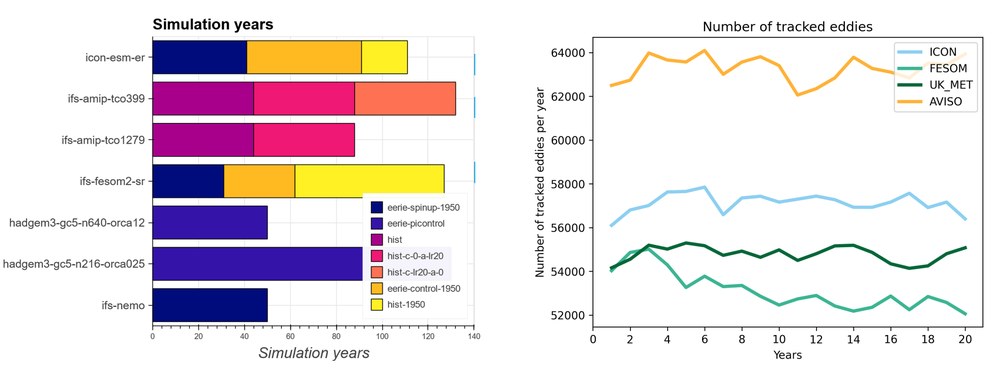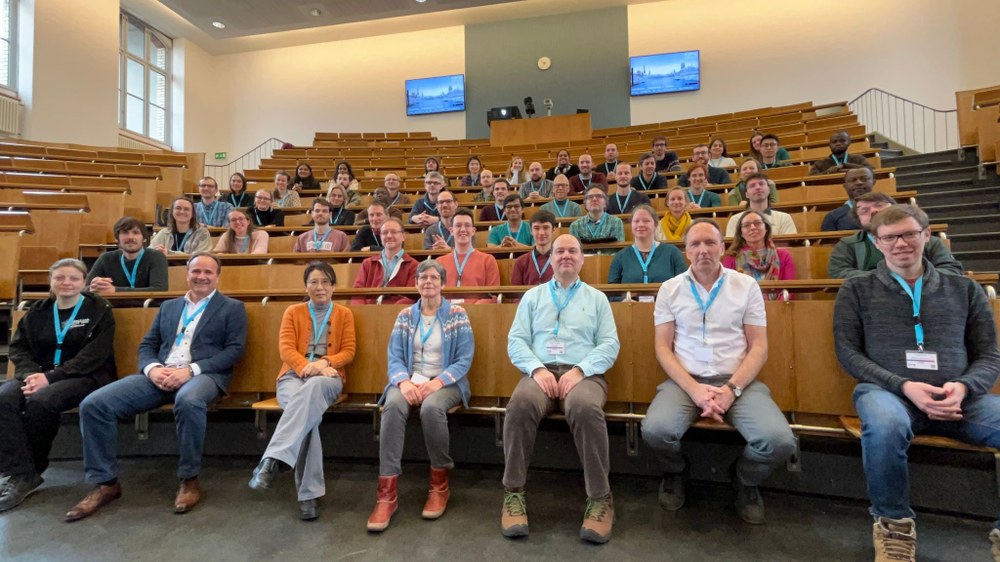21.01.2025
As part of work package 3 of the EU project “Eddy Rich Earth System Models (EERIE)”, DKRZ and the Met Office are jointly responsible for the data management of the model outputs of the simulations carried out in the project.
The coupled EERIE phase 1 simulations consist of a complete, continuous set of four different experiments named eerie-spin-up, eerie-control, hist and a scenario simulation, together covering the years 1950-2050 and thus the centennial scale. For the two German Earth system model (ESM) contributions, ICON-ESM-ER and IFS-FESOM2-SR, this set is now filling up as they are running on DKRZ HPC system Levante. After conducting first analyses on this first-of-its-kind set of long-term global high-resolution (5-10 km) ESM output, it was time for another in-person conference to discuss our progress and goals for the second half of the project.
The host Nicolas Gruber from ETH welcomed the participants. During the first session, chaired by Anne-Marie Treguier, colleagues presented their findings on the impact of the ocean mesoscale on biases in ocean models. They showed that modeling on eddy-rich resolution improves ocean dynamics compared to CMIP6 simulations. Their analysis revealed that it depends on the variable whether there is improvement. They were optimistic that regionally-focused studies would highlight the benefits of eddy-rich-resolution for local areas.

Figure 1 (left): Simulation years of EERIE phase 1 available at DKRZ for different experiments and EERIE Earth System Models. ICON-ESM-ER and IFS-FESOM-SR are run on DKRZ HPC system Levante.
Figure 1 (right): Preliminary result of eddy composite analyses of different EERIE models. Shown is a time series of the number of tracked eddies per year per model (by Stella Bērziņa).
In dedicated breakout groups (BoG), Chathurika Wickramage and Fabian Wachsmann, who together form the DKRZ EERIE team, led hands-on sessions on EERIE FAIR data access as well as a guide to getting started on DKRZ high performance computing system Levante. The team also presented a poster explaining their work and showing how to gain more scientific impact by preparing and refining data to FAIR data products. During these sessions, they collected feedback from different user groups to improve EERIE data access further. One result is that the focus of the biweekly open EERIE data hour (on Mondays at 10 am) will shift from data provision to data usage workflows to better support data users.
Another noteworthy study was presented by Stella Bērziņa, who conducted a statistical composites analysis focusing on a key feature of the EERIE simulations: the eddies. She concluded that while the EERIE models explicitly resolve eddies well, the modeled eddies are, on average, smaller and fewer in number than those observed. The figure 1 (right) shows her results from the eddy composite analysis.
In multiple BoGs, participants discussed strategies for moving forward with phase 2 simulations while addressing storage limitations caused by the large volume of model output. By adopting new recommendations on lossy compression from Work Package 11, the Data Management Work Package (WP3) aims to further reduce the EERIE data volume.
The spanish company Predictia presented its movie highlighting seasonal sea ice fluctuations using output from the EERIE models. In the future, they plan to focus on storylines with potential societal impacts, making their work more accessible to a general audience.
Video 1: 'Eyes on the sea ice' features some of the EERIE project's, its partner institutions' and its sister nextGEMS project's visualisations focusing on sea ice and presented here in a "viz-art-sy" way (source: Predictia).
Eventually, coordinator Thomas Jung had the honor to announce that the last in-person EERIE General Assembly will take place in Barcelona in Spring 2026. With some warm words and a small award ceremony, we thanked the organizers as well as the project office and are now looking forward to the upcoming EERIE challenges and conferences.

Figure 3: The participants of the 2nd EERIE Grand Assembly in Zürich (Photo: Javier Triana Martínez, PREDICTIA)
Official schedule of the 2nd EERIE Grand Assembly: https://events.hifis.net/event/1682/timetable/
